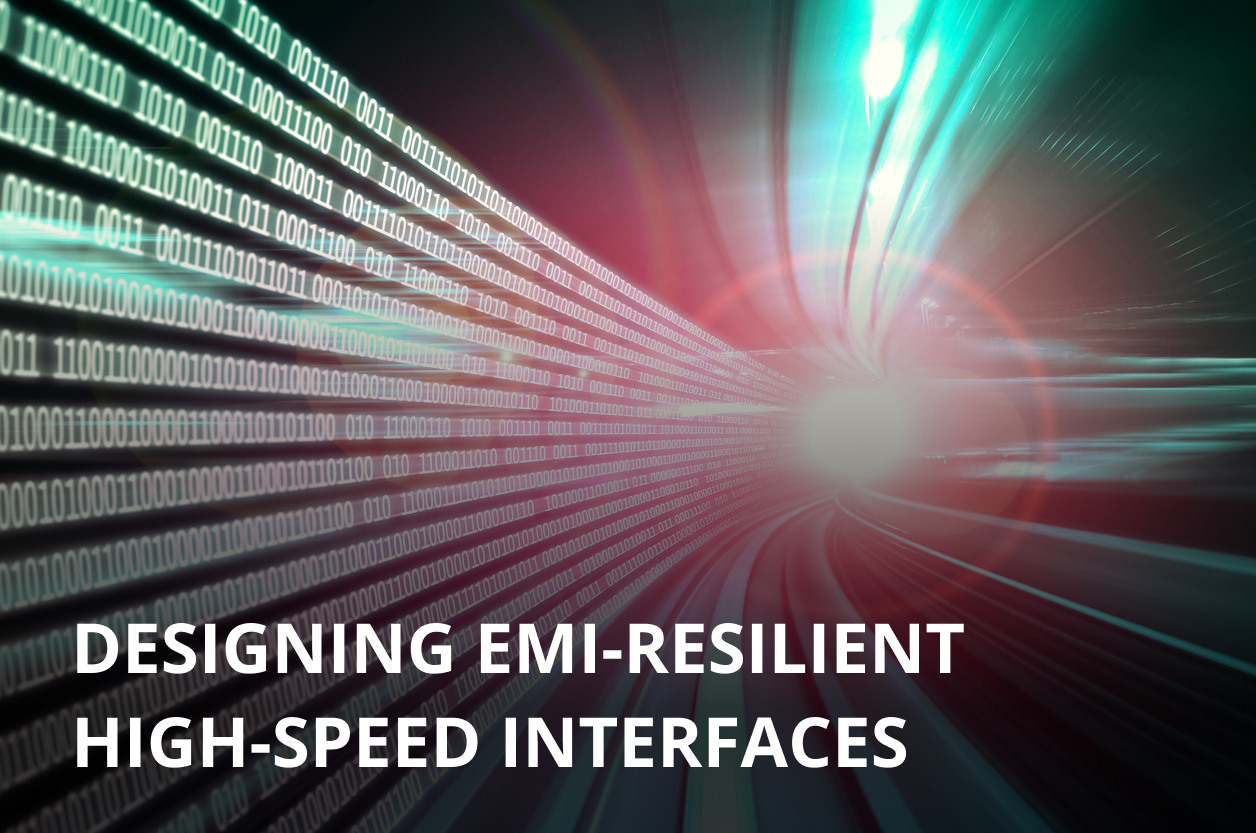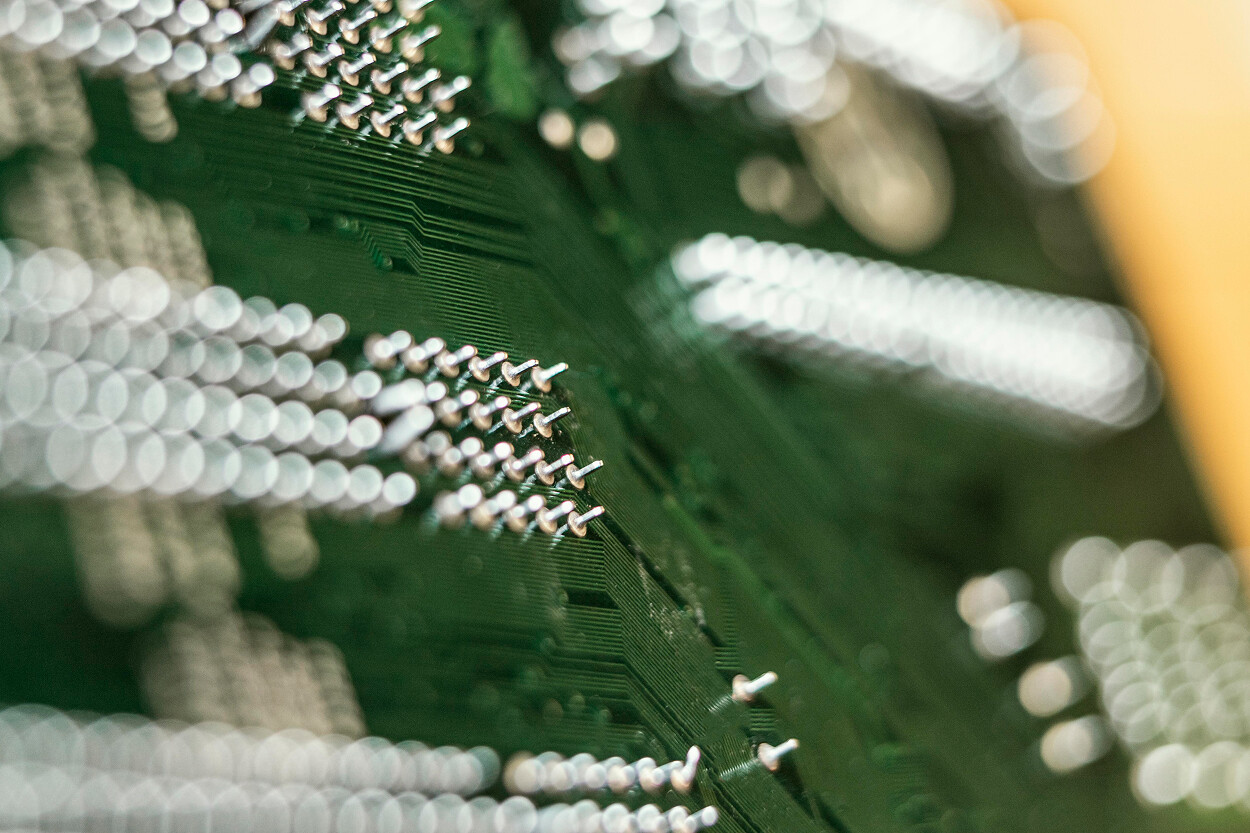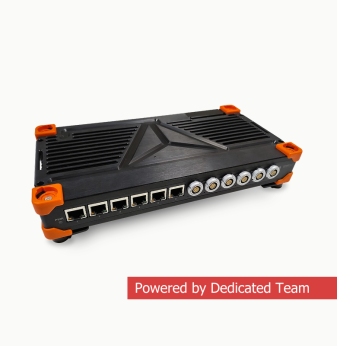Designing EMI-Resilient High-Speed Interfaces: DDR, HDMI, and Ethernet in Mixed-Signal Environments

Introduction: Why EMI Is a Critical Design Concern
As embedded systems push toward higher data rates and integration density, the risk of electromagnetic interference (EMI) grows. Interfaces like DDR memory, HDMI video, and high-speed Ethernet operate in the hundreds of megahertz or gigahertz range — vulnerable to radiated and conducted EMI that can cause signal integrity (SI) issues, degrade performance, or violate regulatory standards.
In this article, we’ll explore proven strategies for designing EMI-resilient high-speed digital interfaces in mixed-signal PCBs. We’ll cover layout techniques, impedance control, return path continuity, shielding, and stackup planning — focusing on the three common troublemakers: DDR, HDMI, and Ethernet.
High-Speed Interface Overview and EMI Challenges
DDR (Double Data Rate Memory)
- Speeds from DDR3 (1600 MT/s) to DDR5 (up to 6400 MT/s)
- Requires strict length matching and impedance control
- Vulnerable to crosstalk and ground bounce
HDMI (High-Definition Multimedia Interface)
- TMDS signaling up to 6 Gbps (HDMI 2.0+)
- Strong radiators due to high edge rates and long cables
- Susceptible to EMI from switching power supplies
Ethernet (100M/1G/2.5G/10G)
- Differential pairs on PCB + transformer-based isolation
- Sensitive to common-mode noise and connector layout
- Shielding and return loss are key concerns
Long-tail keyword example: "What causes EMI in DDR and HDMI designs on mixed-signal boards?"
Answer: EMI in DDR and HDMI often results from improper signal routing, poor return paths, lack of shielding, and unbalanced impedance. High-speed switching edges generate noise that can couple into analog or RF domains, leading to instability or compliance failure.
PCB Stackup and Grounding Fundamentals
- Use multilayer stackups (4+ layers) with dedicated ground planes
- Minimize layer changes for high-speed signals
- Pair each signal layer with a continuous return plane
- Avoid split ground planes in the return path
Recommended 6-layer stack:
- Signal (DDR, HDMI, Ethernet)
- GND (solid)
- Power
- GND (solid)
- Signal (slow I/O, control)
- GND or power
Differential Pair Routing Techniques
- Match trace lengths within 25 mils for short traces
- Maintain differential impedance (typically 100 Ω)
- Avoid stubs and vias; use backdrilling if necessary
- Route pairs tightly coupled to minimize loop area
- Keep pair spacing uniform along entire path
Controlling EMI in DDR Interfaces
- Match address/control and data/strobe lines within timing budgets
- Use fly-by topology for DDR3/DDR4 DIMMs
- Terminate address/command lines appropriately
- Place decoupling caps near each power pin
- Avoid vias in high-speed DDR traces
Long-tail keyword example: "How to reduce EMI in DDR4 memory routing?"
Answer: Use fly-by routing with matched lengths, controlled impedance, solid return paths, and sufficient decoupling. Avoid layer changes and minimize the number of vias. Use termination resistors on address/control lines to damp reflections.
HDMI Layout and Filtering Techniques
- Place HDMI transmitter and connector close together
- Minimize stub lengths and avoid routing under split planes
- Use series resistors at source to reduce overshoot
- Include ESD protection and common-mode chokes
- Use ground stitching vias around the connector for shielding
Ethernet EMI-Reduction Practices
- Maintain 100 Ω differential pairs up to transformer
- Isolate Ethernet magnetics with cutout ground under the transformer
- Stitch ground plane around RJ45 connector
- Add series common-mode choke filters if needed
- Avoid routing high-speed traces near switching regulators
Long-tail keyword example: "How to prevent EMI issues in Gigabit Ethernet PHY designs?"
Answer: Keep Ethernet pairs tightly coupled, route over solid ground planes, isolate magnetics, and avoid routing near noisy power circuits. Use common-mode chokes and ESD clamps to protect and filter differential signals.
Power Supply and Decoupling Strategies
- Use multiple small-value decoupling capacitors close to power pins
- Isolate analog and digital power if SoC has mixed domains
- Use ferrite beads with proper impedance profiles
- Include bulk caps at each voltage rail entry

EMI Simulation and Compliance Testing
- Simulate differential impedance and signal integrity (e.g., HyperLynx, SIwave)
- Use field solvers for PCB stack impedance planning
- Pre-compliance scan with near-field probes and spectrum analyzers
- Validate shielding effectiveness and emissions in anechoic chamber
Summary: Signal Integrity Starts with EMI Control
Designing high-speed interfaces like DDR, HDMI, and Ethernet in EMI-prone environments demands a disciplined approach to layout, stackup, and component placement. By prioritizing return path continuity, impedance control, and isolation, engineers can build systems that pass compliance — and perform reliably in the real world.
Why Promwad?
Promwad helps OEMs develop high-speed digital and mixed-signal devices that meet stringent EMI/EMC and signal integrity requirements. We offer:
- DDR, HDMI, and Ethernet layout review and simulation
- PCB stackup and impedance planning
- Mixed-signal EMI mitigation strategies
- EMC pre-certification and lab testing support
- Full-cycle hardware design and validation
Let’s design your high-speed electronics to pass the first time.
Contact us to discuss your EMI-sensitive project.
Our Case Studies








